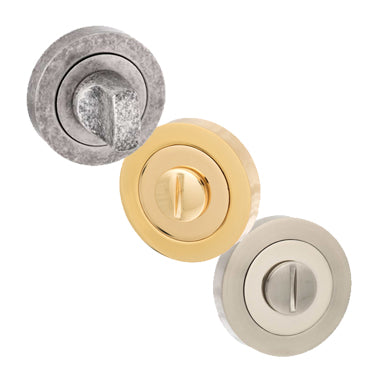Introduction
When it comes to home security and design, door latches often go unnoticed. However, these small components play a significant role in both the safety and aesthetics of your internal doors. The right latch not only secures your space but also adds a touch of elegance to your doors. In this comprehensive guide, we'll delve into the world of latches for internal doors, exploring various types, materials, and brands. Whether you're a homeowner looking to upgrade or a DIY enthusiast interested in the nitty-gritty of door hardware, this article is your go-to resource.Why Latches Matter
Door latches are more than just pieces of metal; they are the unsung heroes that keep your doors securely closed and your spaces private. A high-quality latch ensures that your door shuts properly, providing both security and peace of mind. Imagine a scenario where your latch malfunctions; it could lead to unnecessary stress and even compromise your safety. Therefore, understanding the different types of latches and their functionalities is crucial for every homeowner.Table: Importance of Latches
| Aspect | Importance |
| Security | Prevents unauthorized entry |
| Privacy | Keeps personal spaces private |
| Convenience | Easy to use and operate |
| Aesthetics | Adds a finishing touch to your doors |
Types of Latches

Lock Latches
These are the most common types of latches, offering basic security. They are suitable for bedrooms and bathrooms where privacy is essential.Roller Latches
These latches use a roller mechanism to keep the door in place. They are ideal for closet doors and other internal doors where locking is not necessary.Surface Mounted Latches
These are mounted on the surface of the door and are generally used for aesthetic purposes. They come in various designs and finishes.Table: Types of Latches and Their Uses
| Type of Latch | Best Used For | Security Level |
| Lock Latch | Bedrooms, Bathrooms | High |
| Roller Latch | Closets, Pantries | Low |
| Surface Mounted | Decorative Doors | Medium |
Materials Used in Latches
The material of your latch is as crucial as the type. Different materials offer varying levels of durability, aesthetics, and cost. Here are some common materials used:Brass
Brass latches are known for their durability and classic look. They are often used in traditional homes.Nickel
Nickel latches offer a modern, sleek appearance and are known for their corrosion resistance.Black, Bronze, and Silver
These materials are often used for their aesthetic appeal, adding a unique touch to your doors.Table: Materials and Their Properties
| Material | Durability | Aesthetic Appeal | Cost |
| Brass | High | Classic | Medium |
| Nickel | Medium | Modern | High |
| Black | Low | Unique | Low |
Tamper-Resistant Latches
In today's world, security is a paramount concern. Tamper-resistant latches come with added features like anti-pick shields and complex key patterns, making them difficult to tamper with. These latches are ideal for external doors but can also be used for internal doors that require extra security, such as a home office.List: Advantages of Tamper-Resistant Latches
- Enhanced Security
- Deterrence against break-ins
- Peace of mind
Brands to Consider

Atlantic
Atlantic is a brand we proudly feature, known for its high-quality door latches that offer both security and style. They provide a range of latches suitable for various types of internal doors, from classic to modern designs.Table: Atlantic's Specialties
| Brand | Specialties | Price Range |
| Atlantic | High-Quality, Variety of Designs | $$ |
Top Picks from Atlantic
Based on our experience and customer reviews, here are some top-rated latches from Atlantic:- Atlantic Satin Nickel Adjustable Latch: Known for its adjustable features and elegant satin nickel finish.
- Atlantic 6-Way Adjustable Lock Latch: Offers six different ways to adjust the latch, providing versatility and security.
- Atlantic Stainless Steel Bathroom Door Latch: Ideal for bathroom doors, this latch is designed for both durability and style.
List: Top Picks and Their Features
- Atlantic Satin Nickel: Adjustable, Elegant Finish
- Atlantic 6-Way: Versatile, Secure
- Atlantic Stainless Steel: Durable, Stylish
How to Install a Door Latch

Step-by-Step Guide
- Measure and Mark: Measure the spot where the latch will go and mark it.
- Drill a Hole: Use a hole saw to drill a hole for the latch.
- Insert the Latch: Place the latch into the hole and secure it with screws.
- Attach the Strike Plate: This goes on the door frame where the latch will catch.
- Test: Before tightening all screws, test to make sure the latch catches the strike plate effectively.
Table: Installation Steps and Tools Required
| Installation Steps | Tools Required |
| Measure and Mark | Tape Measure, Pencil |
| Drill a Hole | Hole Saw, Drill |
| Insert the Latch | Screwdriver |
| Attach Strike Plate | Hammer, Screwdriver |
| Test | None |
Tools Needed
To install a door latch, you'll need the following tools:- Tape Measure: For accurate measurements.
- Pencil: To mark drilling points.
- Hole Saw: To drill the latch hole.
- Drill: For making pilot holes.
- Screwdriver: To secure screws.
- Hammer: For the strike plate.
Maintenance and Care
Once your door latch is installed, regular maintenance is essential to ensure its longevity and functionality. Here are some tips:Cleaning
Regular cleaning can prevent dirt and grime from affecting the latch mechanism. Use a damp cloth for basic cleaning.Lubrication
A well-lubricated latch functions smoothly. Use silicone-based lubricants for best results.List: Maintenance Tips
- Regular Cleaning
- Periodic Lubrication
- Tighten Loose Screws
- Check for Wear and Tear
































































































































